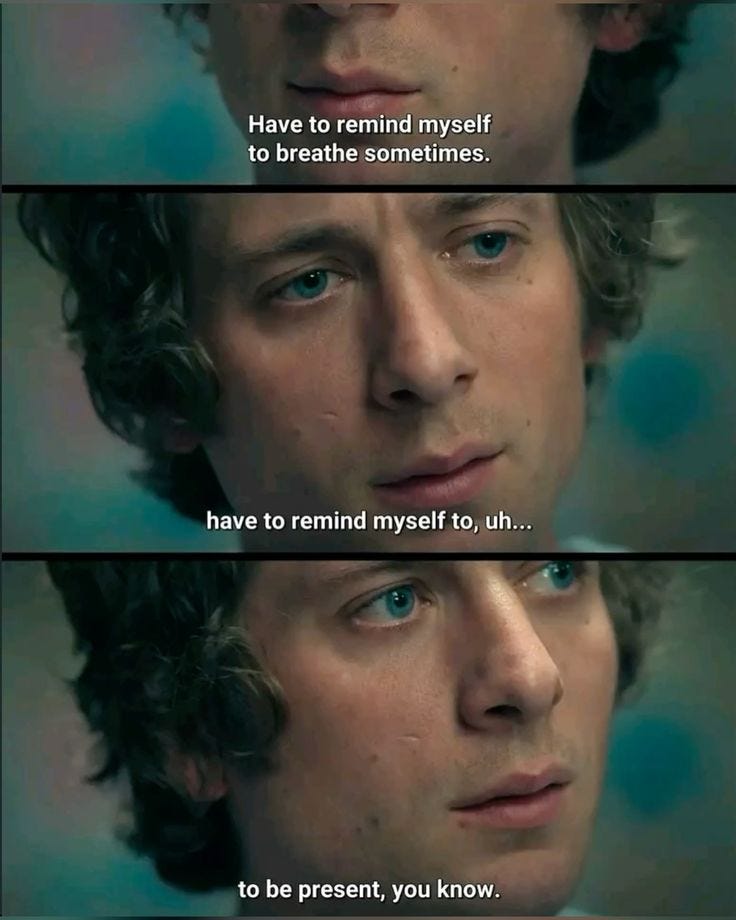Building My Operator OS (Without Losing My Mind)
Because being useful before being told what to do might be your most valuable skill
You have read the origin story and you have already seen the chaos.
Welcome to part three now where I finally try to decode what I am building in the background: a messy, evolving, semi-working system that I now call my Operator OS.
Just a small TLDR before we move forward though - This one is not a “here’s how you do it” blog.
It is more like: here’s what I’m trying, failing at, tweaking, and making up as I go - so I don’t lose my mind while doing five things at once.
Why this post matters?
There’s one truth that defines founder’s office (or any early operator role)….
NO ONE IS COMING TO TELL YOU HOW TO DO YOUR JOB!!
You don’t get a playbook/handbook. You barely get a handoff lol.
So instead, you build your own. You need to build your own..
And, this post is just my attempt to document the systems I am creating mentally, operationally and emotionally just to stay useful, steady, and a little less overwhelmed.
It’s not a masterclass. But I am sure it will give you something to steal, adapt, or try out if you are trying out something similar.
Because if you too are in a role where your title is vague, the expectations are going to be really high.
You will probably have little to no time, your calendar would feel like a puzzle and you will want your own Operator OS too.
Let’s rewind a bit
When I first joined the startup, I came from a consulting background.
My toolkit majorly revolved around PowerPoint, Excel, frameworks, and a high tolerance for vague briefs. But this was different.
Here, there was no bench of analysts. No structured sprint cycles. No structured timelines.
Just me, some Notion pages, and a lot of “Can you figure this out?” energy.
I did not have the answers for sure when I began, but I had the intent. And weirdly, that was enough to start.
So I began building.
Not perfect systems. Not scalable blueprints as they call.
But, just small tools and workflows to help me think clearer, move faster, and stop reinventing the wheel every Monday.
So I started using Claude, ChatGPT, Perplexity, Gemini so much that they legit became like colleagues and my brainstorming buddies.
I started using AI to it’s max potential..
I learnt to built workflows, dabbled with multi-agent coordination, and scripted product videos using various AI apps.
I even poked around social media systems, studied how the best AI-first brands market, and stumbled my way through mini-projects while learning in public.
I did all this while also doing other things like setting up systems for cold email outreach, scraping lead data for them, experimenting with automation workflows, answering support tickets, and helping to set up a help center for our product from scratch.
Nothing too fancy.
But, just trying to figure it out one like one tiny experiment at a time.
Why I Had to Build Systems
During all this process, jumping and moving around from one task to another on a daily basis, no one really told me to build any sort of thinking systems.
But slowly, it became clear that if I didn’t, I would drown.
You can only forget a campaign learning once before you wish you had a simple log of experiments right?
So, I started building some..
The idea of building systems wasn’t something really fancy.
It was just for me to probably build like an error log for survival.
How I Started Thinking in Layers and building those systems
In the beginning, I saw everything as a task: reply to this, write that, fix this, launch that.
But over time, I noticed patterns or recurring pain points that didn’t need to be repeated.
So I started building quiet systems around them.
Not because I wanted to be efficient, but because I didn’t want to lose my mind.
I call it my Operator OS. It’s not fancy.
But it surely works for me now (and I also hope it helps you too)
I essentially made an entire Notion board for myself to track changes to all these divisions and their stages.
Thinking System → The mental runway
A notion page to
Summarize weekly wins, learnings, and decisions
Track unsolved problems and open questions
List of ideas that we could execute (marked differenly, according to long-term, short-term plans)
Feedback System → The signal catcher
Another page to collect and tag feedback from users, support, and the team so that we can,
Spot patterns faster
Translate noise into clear action
Keep a pulse without being in every room
GTM Tracker → My marketing memory bank
More often than note, campaign analytics needed to be tracked and although CRM platforms do help with that, I wanted to keep all the GTM related stuff (both inbound and outbound) at one place,
So to track what worked, what didn’t, and what still might, this page in notion,
Keeps record of campaigns, messaging, assets
Learn from past experiments
Also helps us to avoid starting from scratch every time
Automation Mindset → Build something manually first, automate it immediately
I also made sure to teach myself and document all my experiments with AI. I taught myself to:
Use no-code tools for internal workflows
Integrate forms, CRMs, and support tools
Prototype fast using Claude, ChatGPT, Perplexity, Gemini etc etc
Explore video generation workflows with HeyGen and Truper
Experiment with prompt chaining and multi-agent flows for ops
Save other people in my team (and myself) hours by removing manual steps (literally tried to build a process and then automate it in some form or the other)
Support Loop System → Where product meets reality
I figured that, every ticket or user complaint becomes an input into improving onboarding, content, or workflows for us.
I kept on documenting all this and used it to address issues while creating the help center of our product.
At this point, my notion workspace feels like a goldmine of all my trial and error experiments.
Mostly poorly arranged because it usually acts like a dump for super raw and crazy ideas.
But, it’s the best of all things tried and tested for sure.
Now systems helped. But they weren’t the full answer….
Over time, I realized that building systems was only part of the equation or the process.
They gave structure to my chaos, sure but they didn’t always tell me what to do next. Or what truly mattered that week. Or why I felt stuck even when everything was documented.
That’s when I started noticing a deeper layer to all this.
Yes, systems help you stay organized.
But something else helps you stay oriented.
That’s where intent comes in.
Why intent matters?
While all this keeps on happening, there is this one question that keeps on coming up.
“How do you know what to do when no one tells you and how do you prioritize tasks?”
Honestly? Half the time, you don’t. You just start somewhere.
When there’s no playbook, intent becomes your best friend and your default operating system.
It’s the thing that gets you to open an old campaign doc instead of ignoring it.
It’s what nudges you to fix something because it’s been broken for too long even if no one’s asked.
It’s usually a mix of urgency, intuition, and some level of “what will unblock the most things today?”
It’s not a very glamorous way to look at things maybe,,
But intent is what makes you care enough to ask that question in the very first place
And if you keep showing up with that intent, the clarity builds on its own.
One experiment, one fix, one check-in at a time.
And post that, the prioritization starts on it’s own.
Not from a framework, but from care.
You prioritize the thing you understand, the one you believe will move the needle.
You ship it, learn from it, and repeat.
Intent isn’t a hack.
It’s the fuel that turns your ambiguity into momentum and forms the basis of excelling at a high functioning role like this.
For New Operators Reading this…
If you’re in a founder’s office or generalist role and made it this far in this blog, just know: Most of us are winging it only.
Some with prettier Notion setups.
Some with better screenshots.
But winging it nonetheless.
This role will humble you.
It will teach you more in 6 months than you have probably learned in 3 years.
You will not always be able to explain what you do.
But you will know what you are learning and,
How to spot problems without a brief
How to build before things break
How to stay calm when everything’s on fire
How to create clarity - silently, consistently -from chaos
You will end days wondering what you actually got done…
Until you realize that the real magic was in the dozen tiny fixes that no one else noticed.
On most days you’ll wake up questioning your impact…
And then by mid-day remember how much smoother things run now than before.
This isn’t a post about fancy AI tools and workflows.
It is about building some structure, so the chaos feels less like quicksand.
It’s about designing your own OS, while still running the machine.
It’s figuring out something new, every single day and also creating a lot of mess
But week by week, it’s just a little less mess.
And, a little more clarity.
Until next Sunday,
Muskaan
If you liked reading this, share it with a close friend, girlfriend, boyfriend, parents, or whoever you love or whoever you think can be remotely benefitted from it:)











bang on
This is a bomb drop level.
This should go on all the platforms.
This is really amazing. Literally loved every single punctuation. And the choice of images, wohouuuu. It felt like, should I focus on the story or the next line. Wow. It's a great one. Literally the graph is moving not only upwards but setting up a new bar✨✨